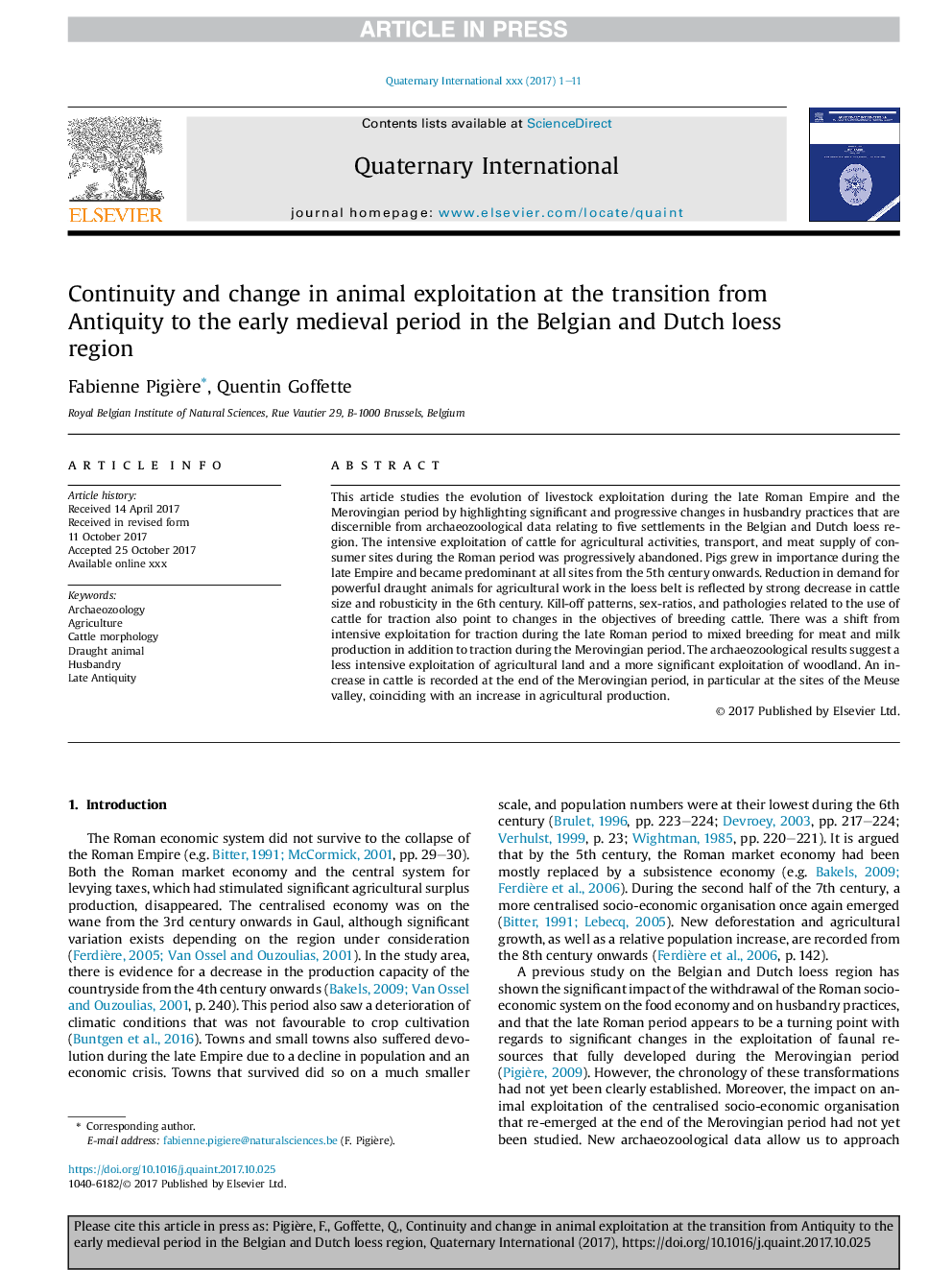ترجمه فارسی عنوان مقاله
تداوم و تغییر در بهره برداری از حیوانات در هنگام گذار از دوران باستان به دوره قرون وسطی در منطقه بلژیکی و لس آنجلس
عنوان انگلیسی
Continuity and change in animal exploitation at the transition from Antiquity to the early medieval period in the Belgian and Dutch loess region
| کد مقاله | سال انتشار | تعداد صفحات مقاله انگلیسی |
|---|---|---|
| 107068 | 2017 | 11 صفحه PDF |
منبع

Publisher : Elsevier - Science Direct (الزویر - ساینس دایرکت)
Journal : Quaternary International, Available online 20 November 2017
ترجمه کلمات کلیدی
باستان شناسی، کشاورزی، مورفولوژی گاو، حیوان پیش نویس دامداری دیرهنگام
کلمات کلیدی انگلیسی
Archaeozoology; Agriculture; Cattle morphology; Draught animal; Husbandry; Late Antiquity;

